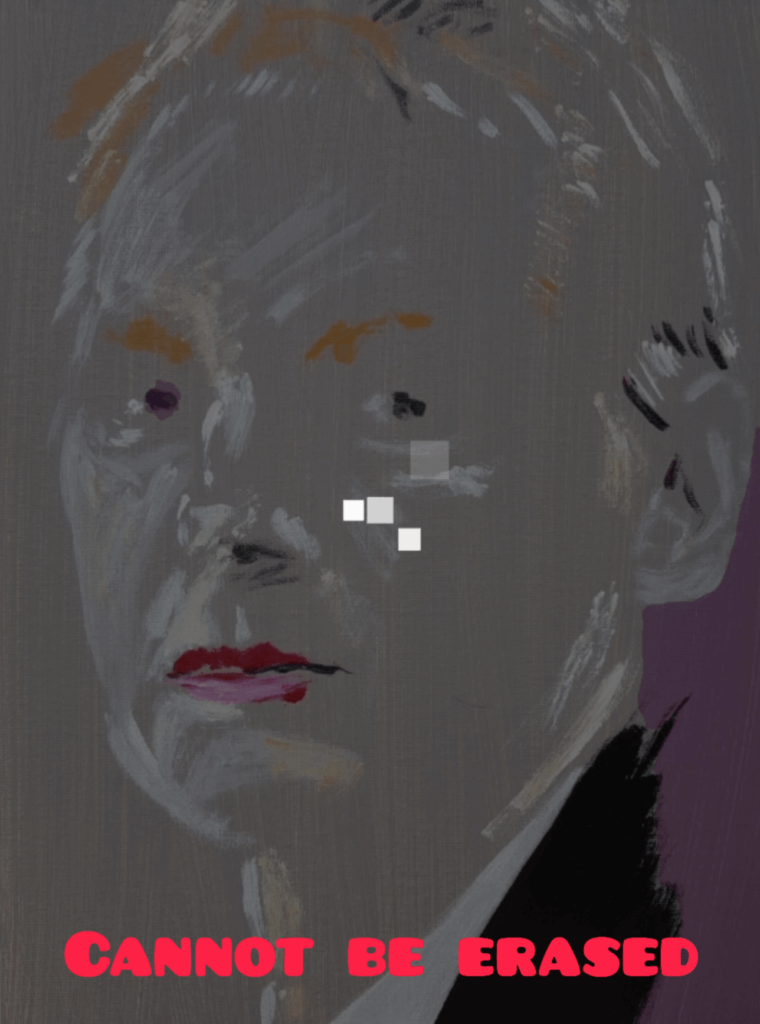‘This Cannot Be Erased’, consists of 111 unique pieces of NFT digital portraits of Julian Assange. It will be unveiled over the summer of 2022.
MATERIA is born. The first blockchain platform created by and for art collectors, art professionals and experts in new technologies opens with the work of Miltos Manetas. Julian Assange as a work of art, a collector’s item and an NFT. This Cannot Be Erased is the proposal that brings together three leading names from the international art scene in the MATERIA platform’s first project. Under the curatorship of Jérôme Sans and with music written by Howie B, the artist Miltos Manetas uses the benefits of blockchain technology to make Assange’s case, his existence, as well as freedom of expression, immutable. Miltos Manetas’ work and interests in the digital sphere naturally led him to work with – and on – Julian Assange, one of the Internet’s most important figures.
A journalist, hacktivist (hacker- activist) and founder of the NGO WikiLeaks, Assange came into the national spotlight in 2010, when he published sensitive information about how the US and its allies were leading the war in Iraq and Afghanistan.
Considered a spy, enemy of the state, but also a hero and a vigilante, Assange’s case divides opinion. For Manetas, it is not a question of this trial applying to traditional nations. It is a force of creation. To silence Julian Assange is to silence the Internet. Assange is the Internet; the Internet is Assange.
“The 111 digital portraits presented by MATERIA in this first project show the artist’s approach, which is often collaborative, and reflect the fluidity of virtual and physical spaces, as well as the construction of the Internet as a real place. In the same logic as the proliferation of the web, he simulates all kinds of digital tools – laptops, cables, etc. – which has become his iconographic system,” explains Jérôme Sans, artistic strategy manager of MATERIA and curator of ‘This Cannot Be Erased’. Manetas’
view of Assange’s character is augmented by the music of Howie B, an essential figure on the British underground electronic scene, who has worked with U2, Bjork and Brian Eno, and has composed legendary soundtracks including Martin Scorsese’s The Wolf of Wall Street.
Background to ‘This Cannot Be Erased’
In 2020, finding himself under lockdown in Colombia, Manetas decided to paint Assange, who had already spent seven years confined in the Ecuadorian Embassy in London, before the British put him in prison, where he remains. Like a daily clock counting the days Assange was imprisoned, Manetas painted, donating each of his portraits on social media to those who asked for them, and who in this
way turned themselves into extensions of the action #AssangePower. This became a project using the Internet’s architecture of broadcasting.
The action became the exhibition Assange’s Condition at the Palazzo delle Esposizioni in Rome in 2020, where the first 40 paintings donated by the artist were exhibited. The exhibition was not accessible to viewers while Assange was still not released, though one could choose to catch a glimpse of it, as though in prison, or view it online. A second exhibition followed at the IKOB Museum in Belgium, called Assange Situation – Emergency (2021), where visitors could take the portraits home with them, progressively leaving the exhibition empty.
Manetas also launched other actions around the figure of Assange, including BYOB (Bring your Own Beamer) events, projecting the portraits around the city of Rome and spreading globally with those participating in the project. The portraits were also exhibited in private homes, and the artist organised visits on ZOOM.
The Internet, a new country: Padiglione Internet at Venice Biennale
If the Internet is a country, it should have its Pavilion in Venice. Following a commission from the Venice Biennale in 2009, Miltos Manetas created the first Padiglione Internet, when Daniel Birnbaum, director of the 53rd Venice Biennale, invited him to propose a project for his Biennale.
Manetas embraces the internal contradictions that can arise with the invention of this new country, one that is not attached to a piece of land but is global and digital: new rules of citizenship, new types of bodies, new idea of freedom, etc. As a country is diverse, Manetas asserts that building it must be open to any person and ideology, so he invents ways to explore unifying pieces of common ground. In the artist’s own words; “the Venice Biennale is where countries show their art, some of them their democracy and freedom. Some countries use the Biennale to ask for freedom and respect for their citizens, this year we are using it to ask for freedom and respect for the internet citizen Julian Assange.
WE are the Internet: we will use the proceeds from the sale of these 111 special NFTs to power the Internet Pavilion at the Venice Biennale. While we do this, we will dedicate our efforts to give back to Julian Assange what many people in many other countries and corporations are taking away from him in such an undemocratic, criminal way: Visibility. Freedom of expression. His voice. THIS CAN NOT BE ERASED.
©2022 MATERIA, Julian Assange







